|
|
 |
 |
 |
 |
 |
 |
 |
 |
 |
 |
 |
 |
 |
 |
 |
 |
 |
 |
 |
 |
 |
 |
 |
 |
 |
 |
 |
 |
 |
 |
 |
 |
 |
 |
 |
 |
 |
|
 |
|
|
|
 |
|
|
|
 |
|
|
|
 |
|
|
|
Recently I stumbled across some photos I thought were lost many years ago. These photos were taken at Phalsbourg Air Base, in France, in 1960. Yours truly at the operating position. |
|
|
|
|
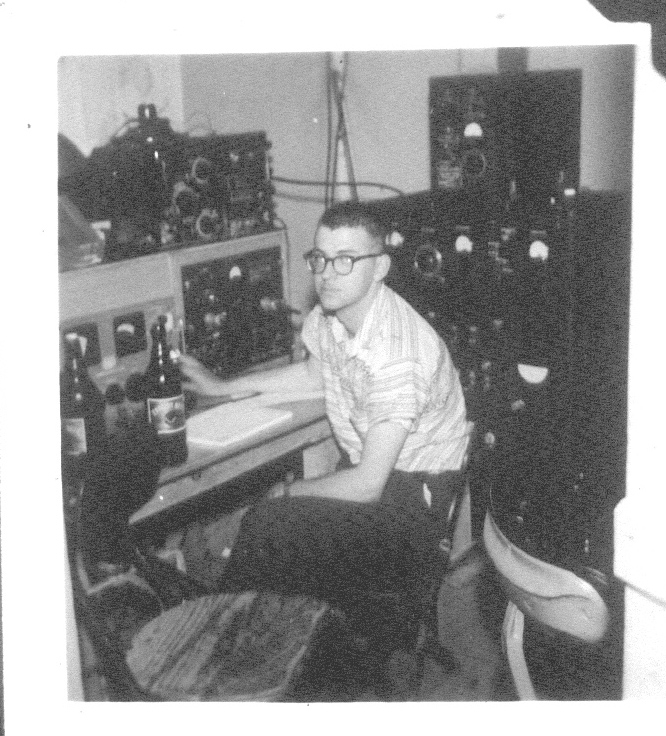 |
|
|
|
In the photo above, the BC610 (one of them) is at my back. On top of it is the antenna tuner. In the center of the console is the BC-614 Speech Amplifier, which drove the modulator for the
610. The receiver is a Hammarlund SP-400-Pro, a pretty good receiver for its day. I am not sure what the box directly by my head is. Looks a bit like a frequency meter. Note the spare tubes
on the desk. I'm not sure if they were new or used. |
|
|
|
|
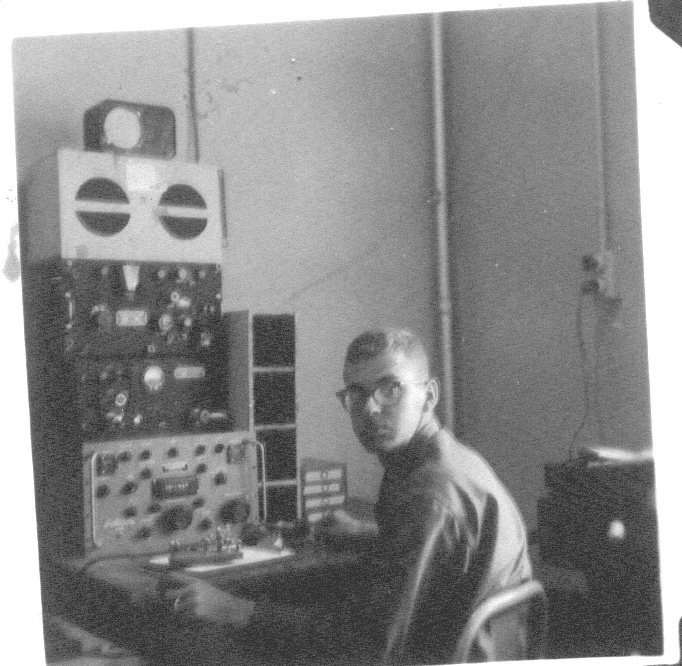 |
|
|
|
This was a temporary operating position while the wooden console was being redone. On top is either a BC312 or a BC342. I think it was a BC342, but I am not sure. Directly under it the
BC614 speech amplifier, and beneath that a brand new Motorola R390A. At my back is the BC-610, but I am not sure if it is an "E" or an "I." We have both. We had 'liberated' the R390A from a
GRC26D Radio Shelter, actually breaking into the shelter from the roof vent and removing the radio. The OSI came looking for it, and they took it away from us. We were not authorized one of those
very new, newfangled R390As. Had to go back to the SP-400. NOTE THE BUG! We had to do HF CW from this station. That was not MARS, though, but the base HF system. |
|
|
|
|
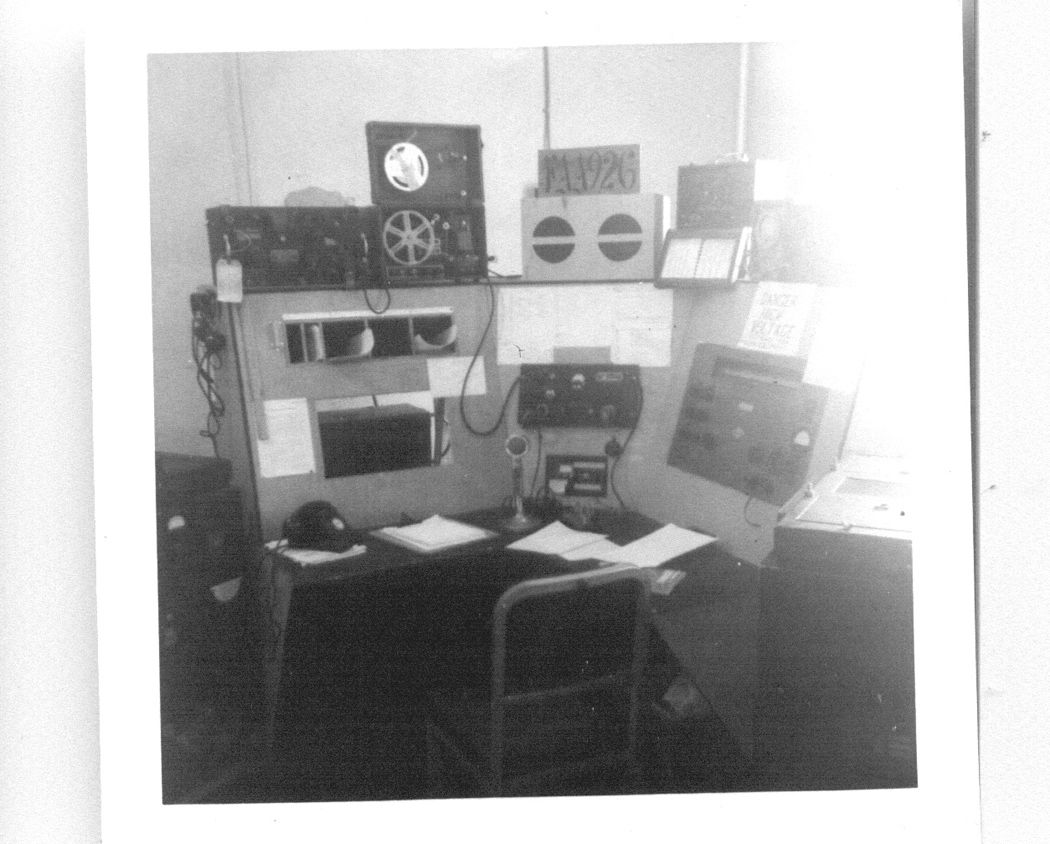 |
|
|
|
The completed console. One BC-610 is to left, the other one to the right.. On top is the BC312 or BC342 receiver, and a TG34?? code tape keyer for training. In this photo the SP-400 has
not been reinstalled. On the right is a monstrosity of a German receiver. Extremely heavy and extremely large. Never saw another one like it anywhere. But it worked beautifully, with
a huge slide rule dial. Beneath the BC614 is a switching control panel. This switched the speech amp from one 610 to the other, and also had a built in phone patch. |
|
|
|
|
 |
|
|
In this photo you can make out two of our four towers. If you look really closely, you can see two of the dipoles as well, one from the tower on the right, and one from the tower on the left.
You can also see an element or two of our ten meter amateur radio beam. Note the slanting tower sections holding up the one tower! Also in the photo is what appears to be a 1956 Ford and in
frotn of it, a French Citroen 2CV. |
|
|
|
|
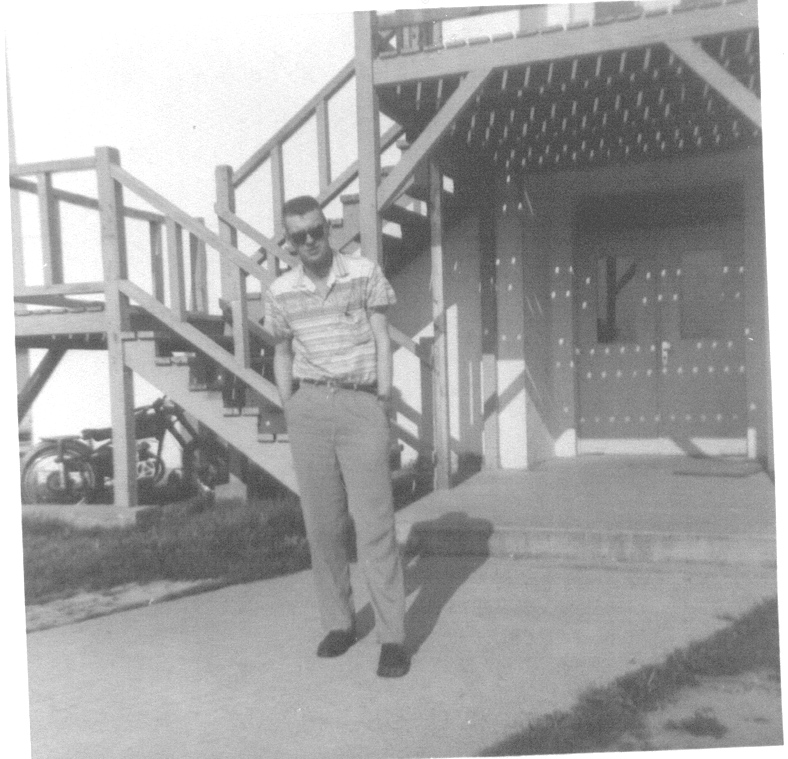 |
|
|
|
"CHOP" - Ed, (then K0KPM) chief op of MARS station FAA926, in his civies. His mode of transportation behind him, a Puegot 125 cc two cycle motorcycle! Three speed. Not exactly a 'go
getter' but suitable for economical transportation. |
|
|
|
|
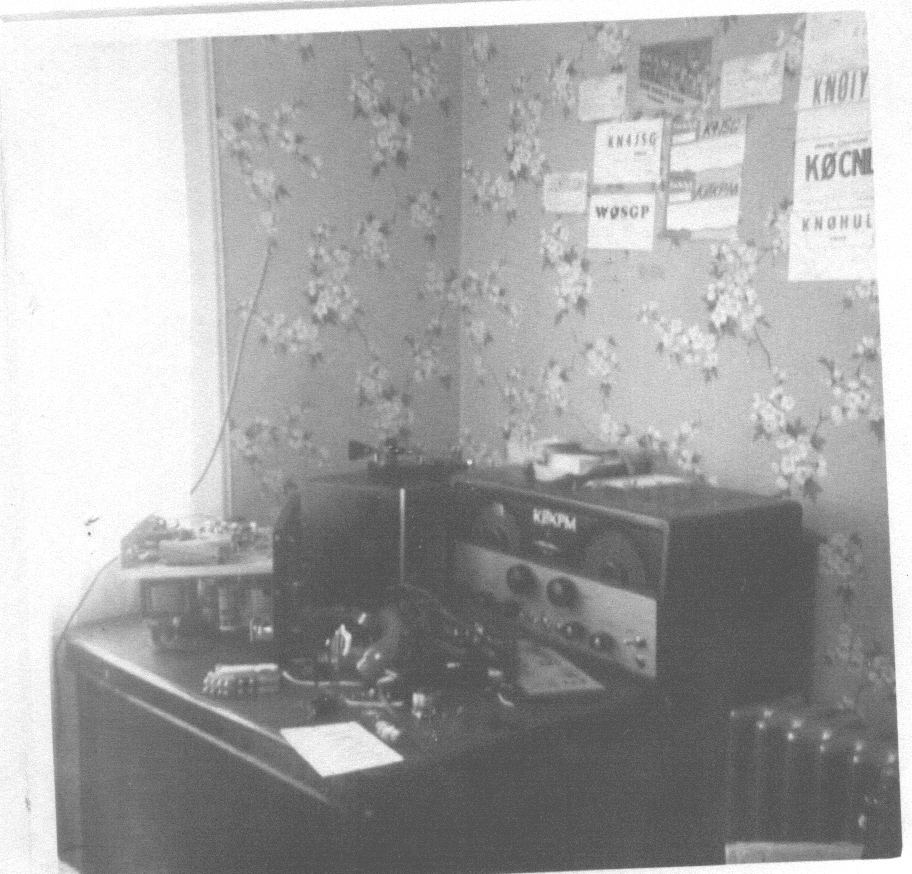 |
|
|
|
My ham station in 1958. An S-85 receiver. Upside down and out of its case is the Johnson Adventurer transmitter. No idea what I was repairing. Note the bug sitting on top of the
case. Also note the QSL card direction above the operating position. One of them is KN4JSG - that was my first call sign, in 1956! The one below it is W0SGP - that was our club station at
Aurora High School in Aurora Colorado. I dubbed it "School's Greatest Program" |
|
|
|
|
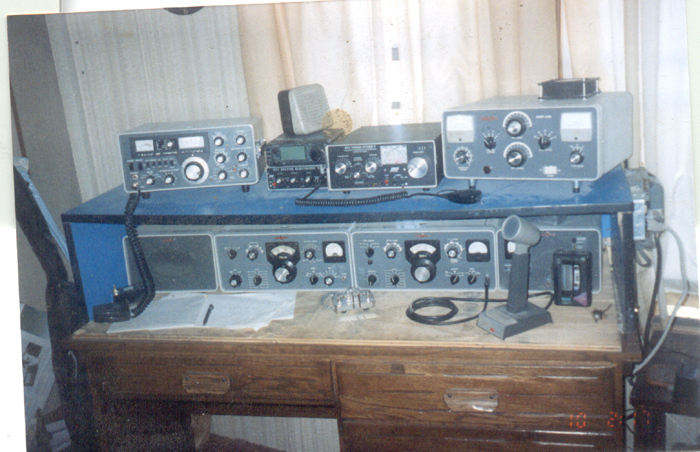 |
|
|
|
Finally, the Collins S-line in 2004. I later sold it and bought a Drake B-line. But in this photo I had the Yaesu FT101-EE at tope left,, and to its righ the Icom 706 on top of an MFJ
keyer. Then the MFJ 989C tuner, and finally the Hunter Bandit 2000B 'near legal limit' amp. On the desk is the MFJ paddles. |
|
|
|

